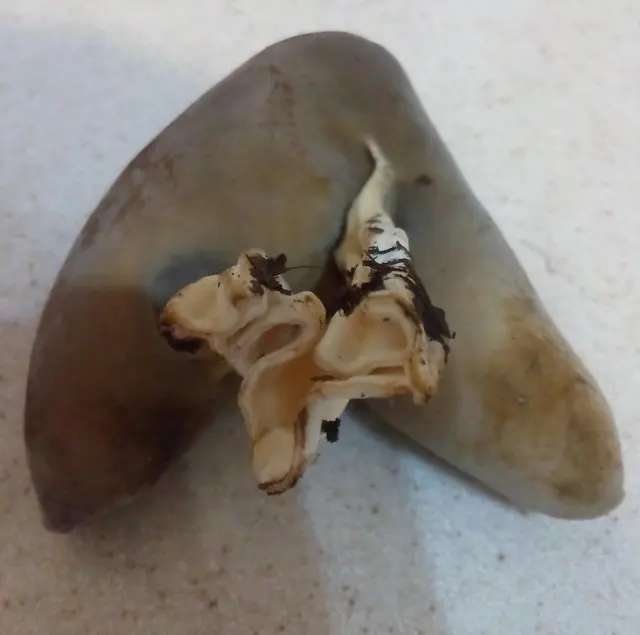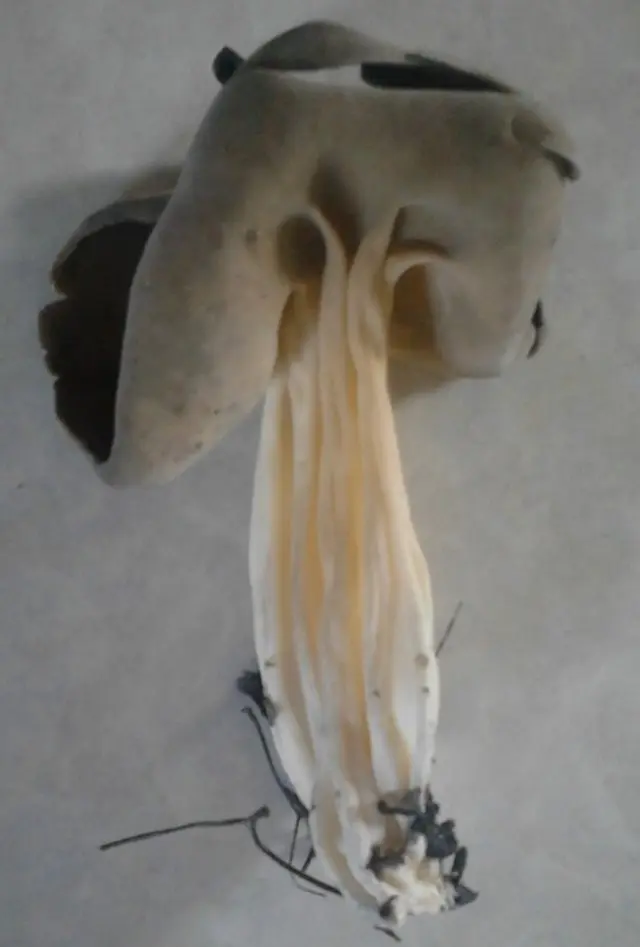Helvella Queletii (Helvella queletii)
- Department: Ascomycota (Ascomycetes)
- Subdivision: Pezizomycotina (Pezizomycotins)
- Class: Pezizomycetes (Pezizomycetes)
- Subclass: Pezizomycetidae (Pezizomycetes)
- Order: Pezizales (Pezizales)
- Family: Helvellaceae (Helwellaceae)
- Genus: Helvella (Helvella)
- Type: Helvella queletii (Helvella Kele)
:
- Pagina queletii

head: 1,5-6 cm. In young mushrooms, it is flattened from the sides, the edges may turn inwards a little. In mature specimens, it can acquire a saucer shape. The edge may be slightly wavy or “torn”.
The inner, spore-bearing surface is grayish-brown to brown, brown and even almost black, smooth.
The outer surface is much lighter than the inner, pale greyish-brown to whitish when dry, and you can see some fuzzy “grain” on it, which is actually tufts of short villi.
Leg: height 6-8, sometimes up to 11 centimeters. The thickness is usually about a centimeter, but some sources indicate the thickness of the legs up to 4 centimeters. The stalk is distinctly ribbed, with 4-10 ribs, slightly passing to the cap. Flat or slightly widening towards the base. Not hollow.

Light, whitish or very pale brown, may be slightly darker in the upper part, in the color of the outer surface of the cap.
The ribs do not break off abruptly at the transition from the cap to the stem, but pass to the cap, but quite a bit, and do not branch.

Pulp: thin, brittle, light.
Smell: unpleasant.
Споры 17-22 x 11-14µ; elliptical, smooth, flowing, with one central drop of oil. Paraphyses filiform with rounded apices, which become pointed with maturity, 7-8 µm.
Kele’s lobster can be found in spring and summer in forests of various types: coniferous, deciduous and mixed. Distributed in Europe, Asia, North America.
The data is inconsistent. The mushroom is considered inedible due to its unpleasant odor and low taste. There is no data on toxicity.
- Goblet lobe (Helvella acetabulum) – most similar to Kele’s lobe, the species intersect in time and place of growth. The goblet lobe has a much shorter stem, the stem is widened to the top, and not to the bottom, like the Kele lobe, and the main difference is that the ribs go high to the cap, forming a beautiful pattern, which is compared either with frosty patterns on glass, or with a pattern of veins, while in the Kele lobe, the ribs go to the cap by literally a few millimeters and do not form patterns.
- Pitted lobe (Helvella lacunosa) intersects with Kele lobe in summer. The main difference: the cap of the pitted lobe is saddle-shaped, it is bent downwards, while the hat of the Kele lobe is cup-shaped, the edges of the cap are bent upwards. The leg of the pitted lobe has hollow chambers, which are often visible when simply examining the fungus, without cutting.
The species was named after the mycologist Lucien Quelet (1832 – 1899)
Photo: Evgenia, Ekaterina.









